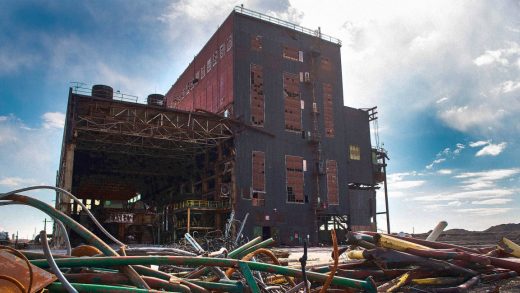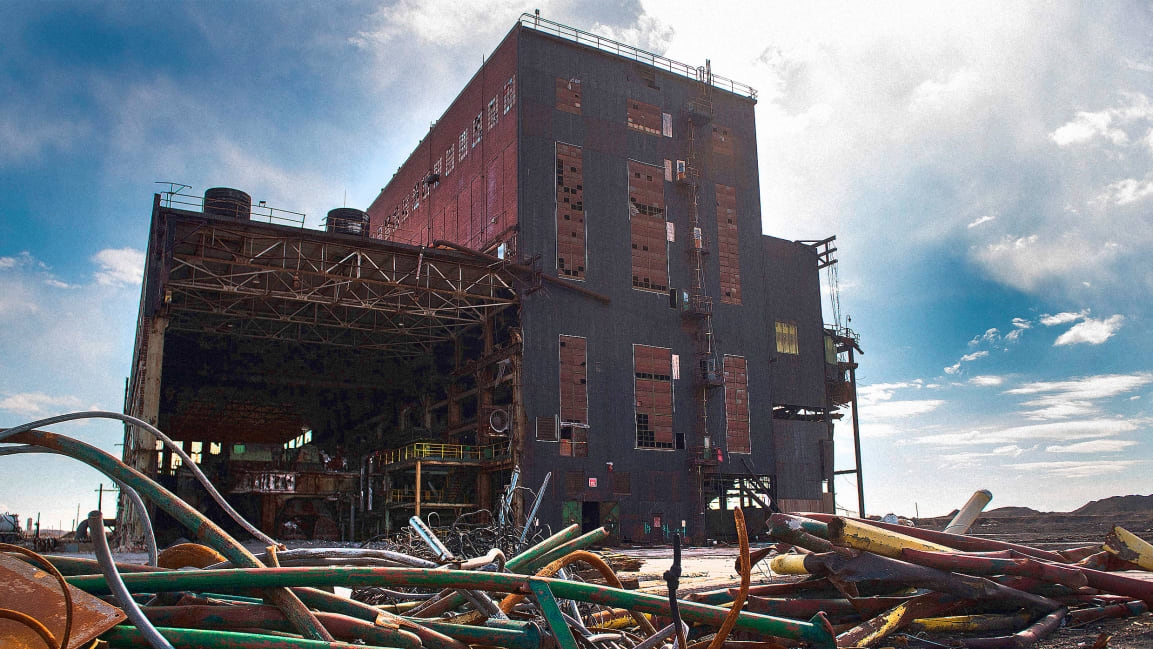This was once the largest steel mill in the world. Now it’s going to build clean energy infrastructure
Once the site of the largest steel mill in the world, Sparrows Point in Maryland was a major player in shipbuilding and steel production, including for the girders of the Golden Gate Bridge, before it closed in 2012. Now, a portion of that former mill will get a new life as a manufacturing facility to support offshore wind energy.
The United Steelworkers union; Tradepoint Atlantic, which owns the property; and US Wind, a Baltimore-based subsidiary of Italian renewable energy company Renexia SpA, announced their partnership on the project this week. Maryland’s first permanent steel-and-offshore-wind fabrication facility, the Sparrows Point location will create 500 full-time union steelworker manufacturing jobs, along with about 3,500 construction jobs, and support US Wind’s clean energy projects, including an 82-turbine project called Momentum Wind.
It’s an example of how investment in renewable energy to meet climate targets could create millions of energy jobs around the world, including in manufacturing wind- and solar-energy systems. In the U.S., that job field, and the presence of wind turbine production, has already been growing. In 2004, there were as few as 30 U.S. manufacturing facilities producing wind turbines and other wind energy components; by 2011, that number grew to about 470. According to the U.S. Department of Energy, there are now more than 500 manufacturing facilities across the country making wind turbine blades and towers and assembling those turbines.
And it’s still growing. In December 2020, New Jersey officials announced a $250 million manufacturing facility to build steel monopiles, the supporting columns for offshore wind turbines—an investment that Governor Phil Murphy described as the “largest industrial offshore wind investment in the United States to date.” In March 2021, the Biden administration announced a plan to expand offshore wind power, specifically mentioning the “10,000 tons of domestic steel that workers in Alabama and West Virginia are supplying to a Texas shipyard” where a wind turbine installation vessel is being built, as an example of the economic impact of this kind of investment.
Now that there’s a lease agreement, US Wind will invest $150 million to develop Sparrows Point Steel, which will also manufacture steel monopiles, and could eventually deliver other turbine components like towers and blades (there’s not yet a timeline for when construction will begin, or when it will open). US Wind is already in the process of building an offshore wind farm called MarWin off the coast of Ocean City, Maryland, but for now, the materials for the 22 wind turbines that will be used there are currently made in Europe.
That the new steel facility will bring some of those manufacturing jobs back to the historic site of a Maryland steel mill means a lot to the United Steelworkers specifically. “We always felt [Sparrows Point] was sacred ground,” says Jim Strong, assistant to the director for United Steelworkers, who notes that the union represented workers there for over 70 years, at one time with more than 30,000 members. Both United Steelworkers and US Wind have been committed to getting this project done, he adds, to “get good agreements that provide for workers and the facility running, so that the materials that they make increases our use of renewable energy.”
(54)



